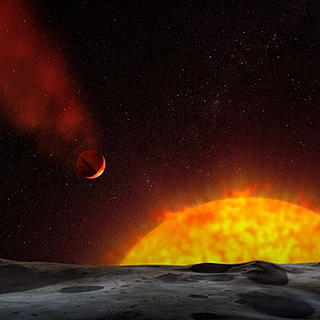How to Start Living Off-Grid in Arizona
- Sean Harron
- Sep 29
- 4 min read
Living off the grid in Arizona offers a unique opportunity to embrace independence, sustainability, and a closer connection to nature. The state’s diverse landscapes, from deserts to forests, provide a variety of options for those looking to escape the hustle and bustle of city life. If you’re considering making the leap to self-sufficient living, this guide will walk you through the essential steps to start your journey.
Understanding Arizona Off-Grid Living: What You Need to Know
Arizona’s climate and geography make it an ideal place for off-grid living, but it also presents some challenges. The hot, dry desert areas require careful planning for water and energy needs, while the higher elevations offer cooler temperatures and different resources.
To begin, you’ll want to focus on three main components:
Water supply: Access to clean, reliable water is critical. Options include drilling a well, collecting rainwater, or hauling water.
Energy sources: Solar power is popular in Arizona due to abundant sunshine. Wind and generators can supplement energy needs.
Shelter and waste management: Building a home suited to the environment and managing waste responsibly are key to sustainable living.
Planning your off-grid lifestyle means balancing these elements with your personal needs and budget.

Essential Steps to Start Your Arizona Off-Grid Living Adventure
Starting your off-grid life requires careful preparation and practical steps. Here’s a roadmap to help you get started:
Choose the right location
Research areas with access to water, good solar exposure, and legal allowances for off-grid living. Remote areas in northern Arizona or near the Mogollon Rim are popular choices.
Secure land and permits
Purchase land that fits your needs and check local zoning laws. Some counties have restrictions on off-grid structures or require permits for wells and septic systems.
Set up your water system
Depending on your location, you might drill a well or install rainwater catchment systems. Water storage tanks and filtration systems are essential for safety and convenience.
Install renewable energy systems
Solar panels combined with battery storage are the most common setup. Consider backup generators for cloudy days or emergencies.
Build or buy an off-grid home
Options range from tiny homes and cabins to earthships and yurts. Use materials that provide insulation and withstand Arizona’s temperature swings.
Plan for waste management
Composting toilets and septic systems are common solutions. Proper waste disposal protects the environment and complies with regulations.
Grow your own food
Start a garden with drought-resistant plants and consider raising chickens or other small livestock for eggs and meat.
Prepare for emergencies
Stock up on supplies, have a first aid kit, and develop a communication plan since remote areas may have limited cell service.
By following these steps, you can create a comfortable and sustainable off-grid lifestyle tailored to Arizona’s unique environment.

Can You Legally Live Off-Grid in Arizona?
One of the most common questions is whether living off-grid is legal in Arizona. The answer is generally yes, but with some important caveats.
Arizona does not have statewide laws prohibiting off-grid living. However, local county regulations vary widely. Some counties are very permissive, while others have strict building codes and requirements for utilities.
Key legal considerations include:
Building codes: Many counties require homes to meet certain standards for safety and habitability.
Water rights: Drilling a well often requires permits, and water use is regulated.
Septic systems: Proper permits and inspections are usually necessary.
Zoning laws: Some areas restrict the types of structures or land uses allowed.
Before purchasing land or building, consult with local authorities or professionals who specialize in off-grid living. This will help you avoid costly legal issues and ensure your home is compliant.
For expert advice and assistance with construction and consultation services related to off-grid living, consider reaching out to off-grid living arizona.

Practical Tips for Sustainable Off-Grid Living in Arizona
Living off-grid is rewarding but requires ongoing effort and smart choices. Here are some practical tips to help you thrive:
Maximize solar energy: Position panels for optimal sun exposure and keep them clean.
Conserve water: Use drip irrigation, mulch your garden, and recycle greywater where allowed.
Insulate your home: Proper insulation reduces energy needs for heating and cooling.
Use native plants: They require less water and maintenance.
Maintain your systems: Regularly check solar panels, batteries, and water filters.
Build community connections: Networking with nearby off-grid residents can provide support and resources.
Stay informed: Keep up with changes in local laws and technologies.
By adopting these habits, you’ll enhance your comfort and sustainability while minimizing your environmental impact.
Embracing the Off-Grid Lifestyle in Arizona: What to Expect
Transitioning to off-grid living in Arizona is a lifestyle change that offers freedom and self-reliance. You’ll enjoy:
Peace and privacy: Remote locations mean fewer neighbors and less noise.
Connection to nature: Experience Arizona’s stunning landscapes firsthand.
Lower utility costs: Solar power and water independence reduce bills.
Personal growth: Learning new skills and problem-solving daily challenges.
However, it also requires resilience and adaptability. Be prepared for:
Isolation: Social opportunities may be limited.
Maintenance demands: Systems need regular care.
Weather extremes: Hot summers and cold winters require preparation.
With the right mindset and planning, off-grid living in Arizona can be a fulfilling and sustainable way to live.
Starting your journey to off-grid living in Arizona is an exciting adventure. By understanding the environment, legal requirements, and practical needs, you can create a self-sufficient lifestyle that suits your goals. For professional guidance on construction and consultation, explore off-grid living arizona to make your dream a reality.



Comments